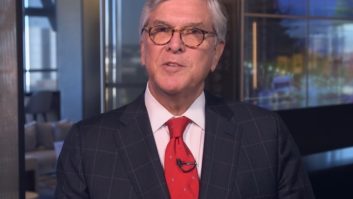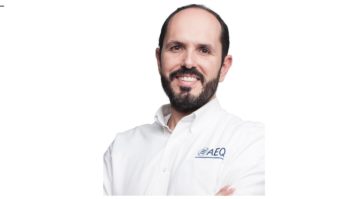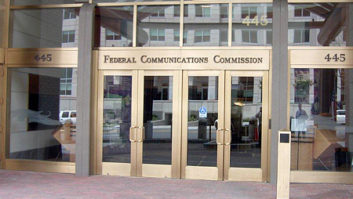As CARP Debate Expands and Bandwidth Costs Rise, Experts Look at What’s Ahead for Streaming Radio Industry
While debate continues over copyright rules and limited advertising dollars, online radio executives at a recent Streaming Media West conference agreed on one thing.
“Internet radio streaming is an opportunity to reinvent radio,” said Karl Spangenberg, president and CEO of Lightningcast, which creates technology that can insert targeted advertising into streaming media.
“Streaming for radio broadcasters allows you to get the interactivity of an online product and the targeting aspects of other kinds of advertising.”
This combination should bode well for the streaming market, according to Spangenberg and four other panelists speaking at the session “Streaming for Radio Broadcasters” at the April Streaming Media West conference in Los Angeles.
Add to this the surprising initial ruling handed down from the Copyright Arbitration Royalty Panel (CARP) in mid-May, which rejected a proposal requiring online radio streamers to pay a license fee as well as a flat per-song, per-listener fee for online radio broadcasts.
Yet online radio still sees obstacles.
“True, there are some advantages that streaming has over traditional radio, among them are targeting for advertising and interactivity,” said session moderator Max Bloom, founder of Integrated Streaming, a Web site development, hosting and encoding company.
“But, as traditional broadcasters know, the more people who listen to a transmitted signal, the better. With streaming radio that isn’t the case.”
CARP ruling
In a positive move for the online radio industry, on May 21 CARP moved to reject a proposal that would require online radio streamers to pay a license fee as well as a per-song, per-listener fee.
Suggested royalties included a minimum $500 license fee as well as rates of fourteen-hundreths of one cent per song per listener for Internet-only Webcasts, and seven-hundreths of one cent per song per listener for terrestrial radio stations Webcasting their same over-the-air program.
The radio broadcasting industry had lobbied hard for the rejection of this statute, and in recent weeks received some federal support. Members of the U.S. House of Representatives sent a letter to the Librarian of Congress urging him to consider the goal of the statutory royalty rate; the Senate Judiciary Committee met to discuss issues revolving around the proper royalty rate for Internet radio.
Yet the the panel had 30 days to propose another set of royalty fees. A final decision was expected by June 20; at press time, it was unclear which way it would go.
“I don’t think anyone (in the streaming industry) is saying that they don’t want to pay for the music, but they’re saying let’s at least make it a percentage of the revenue we’re earning, as opposed to a flat fee,” said David Frerichs, founder of iM Networks, a provider of Internet radio and audio programming solutions.
According to Jay Hayes, CEO of Blue Falcon Networks, a developer of streaming media network software, the initial fee suggestions ignored the enormous end-user demand and potential growth for the online radio industry.
“Online radio is an enormous new vehicle that listeners are demanding, and the (CARP ruling) will create a gigantic economic problem on top of economic problems that already exist.”
Added Frerichs, “Everyone recognizes that this is going to be a massive revenue-making industry and everyone is scrambling to own it.”
Financial pinch
In addition to ongoing concerns over the final CARP ruling, online radio broadcasters have felt the pinch of limited advertising over the last few months. The industry is engaged in a heavy push to increase consumer and corporate knowledge of streaming audio’s capabilities.
“The reason that many of these stations aren’t profitable is simply because they’re not big enough,” Frerichs said. “To create a profitable streaming radio business, you need about 10 million listener hours per month.
“(Success right now) has nothing to do with the fact that people aren’t paying enough money or the effects of Sept. 11,” he said. “It has to do with not yet having a big enough audience.”
While premises like “make more revenue than your online costs” may seem like an oversimplification of the path to success, it’s important to keep the online “paradox of popularity” in mind, said Hayes.
“As you grow, bandwidth costs grow more, which is the exact opposite of what radio stations are familiar with in the terrestrial world. Therefore, one of the problems (with online radio stations) is that the entire supply chain for bandwidth is an incredibly capital-intensive project to put together.”
Yet despite concerns over rising bandwidth costs and ongoing copyright issues, online radio has a bright future, the panelists believe. Audience tracking of top 25 stations was up 563 percent since January 2001, “which is a pretty good indication that regardless of stations that come and go on the Internet, the people who are listeners out there are loyal listeners,” said Ed Hardy, CEO of MeasureCast, a streaming audience measurement company. When one station shuts down, he said, online audiences are finding other places to listen.
“In fact, listeners during the midday period are significantly higher than we’ve ever seen in terms of over-the-air radio. That provides a unique advertising vehicle for streaming advertisers because those listeners were not reachable by traditional radio in the past.”








